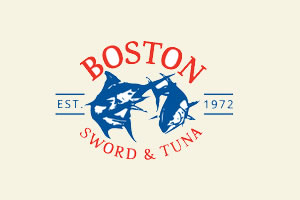
National Oyster Day 2016
Fortune is celebrating National Oyster Day by reminiscing on its history here in the Midwest. The presence and popularity of oysters has evolved over decades, since their first arrival in sealed cans by railroad. The refrigerated railroad cart, a product of Chicago's own inventive butcher, Gustavus Swift, lead to the uncanny arrival of live oysters in Chicago. Oysters would travel anywhere from thirty hours to two weeks to land on the plates of Chicagoans. Culinary artisans of the 19th century discovered countless ways to taste the ocean from the shorelines of Lake Michigan. Oysters appeared on menus in oyster shooters (1860), oyster stouts (1800), and in various other forms. Oysters proved so popular that even those that could not afford the real deal, crafted fake oysters made from grated corn. In 1893, during the World's Columbian Exposition oysters grew to be the peanuts of 19th century, especially in the Midwest
A sense of Chicago pride remains apparent in the twin labels of Fortune Brother’s Brewing Company’s Old 1871 brew and Old 1871 oyster. Fortune Brother’s Brewing Company, founded by Peter and John Fortune spawned from the brother’s training at Guinness in Dublin. Peter Fortune is the great-grandfather of Sean O'Scannlain, CEO of Fortune Fish & Gourmet. Upon the brothers’ arrival to America, Chicago experienced The Great Fire of 1871 which wiped out an area known as “Brewtown”. Thanks to the ‘luck o’ the Irish’, the Fortune Brothers were spared and persisted operation even through the prohibition, making pasta to survive. The aftermath of the prohibition lead to a resurgence of oysters and beer, this trend became so widespread that Guinness ran an advertising campaign claiming, “Guinness brings the oyster out of their shells”. Fast forward to 2013 to the birth of Fortune Fish & Gourmet’s Old 1871 Oyster, which to this day still pairs nicely with a Guinness. Much like the nutritional healing powers of Guinness, oysters too are very good for you; arguably even more so than beer. This talented bivalve proves to be a multivitamin for whichever ecosystem it inhabits whether it’s hugging the coastline of Chesapeake Bay or sitting on a plate next to a glass of champagne.
While oysters’ popularity continues to climb, the stocks have diminished over the years with the increasing population density of US coastlines. A recent climb in oyster sales and oyster men has led to various restoration projects that are working to meet the climbing demand for oysters. In true Fortune fashion, we believe the best way to guarantee the oysters on your plate is to slurp and enjoy. Help us drive demand for good aquaculture practices to save our oyster beds and celebrate the Midwest history of the delectable oyster by sharing them with your customers today and every day. That’s a taste you can enjoy in every month (even those that don’t end in ‘R’), shout out to all of those hard working haploids and triploids out there.
One final pearl of wisdom from Patrick McMurray’s Consider the Oyster—A Shucker’s Field Guide:
“Like terroir in the wine world, merroir (or sense of place in the ocean) of the oyster will denote the specific flavor within the family. Salty, sweet, freshwater, earthy notes, all will change from place to place. That’s what makes the oyster so exciting as a food. There is nothing quite as complex in its simplicity as an oyster, and it can take you back to the sea in one quick sip. Close your eyes, open your mind and I’ll take you there.”















